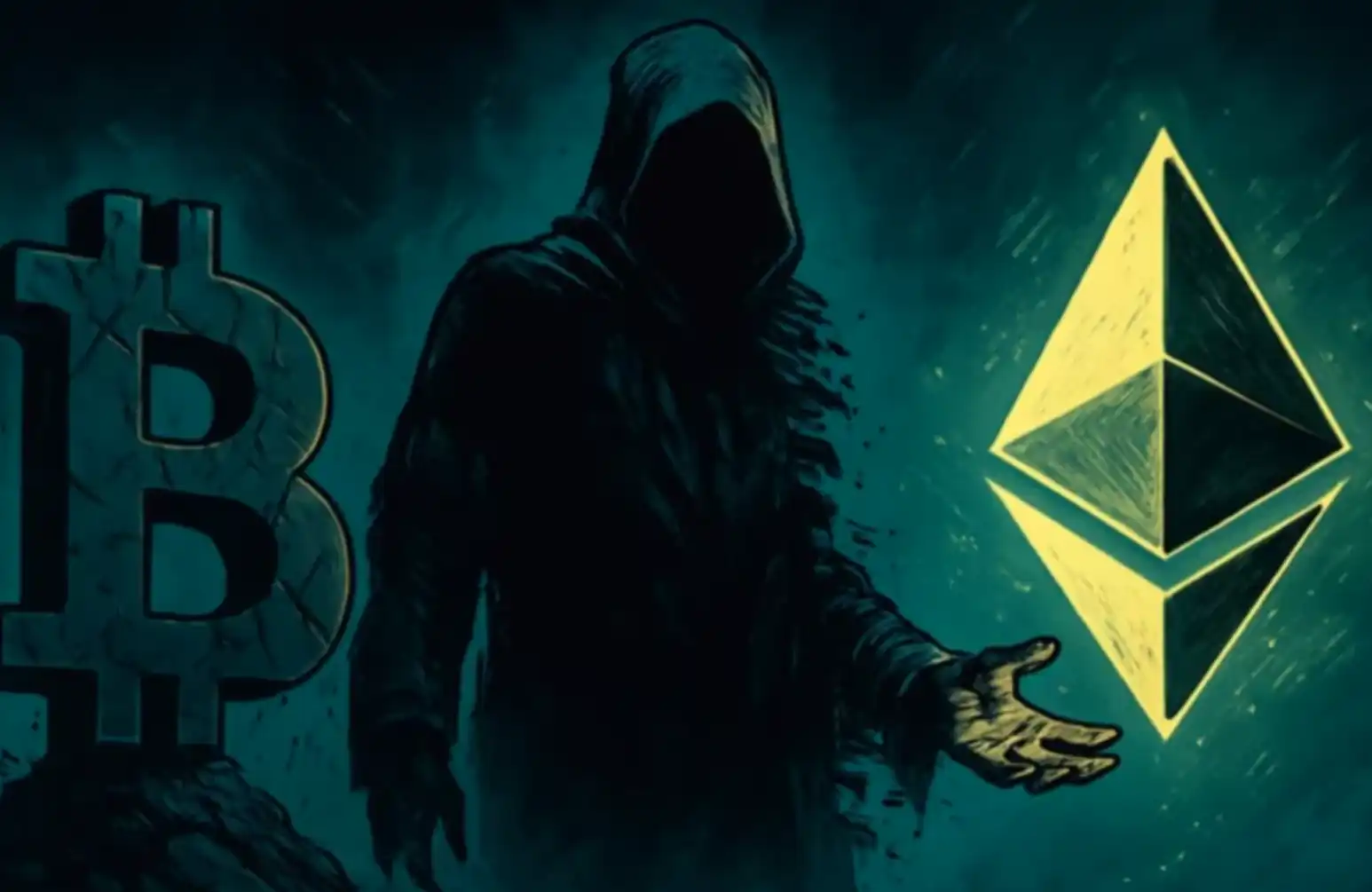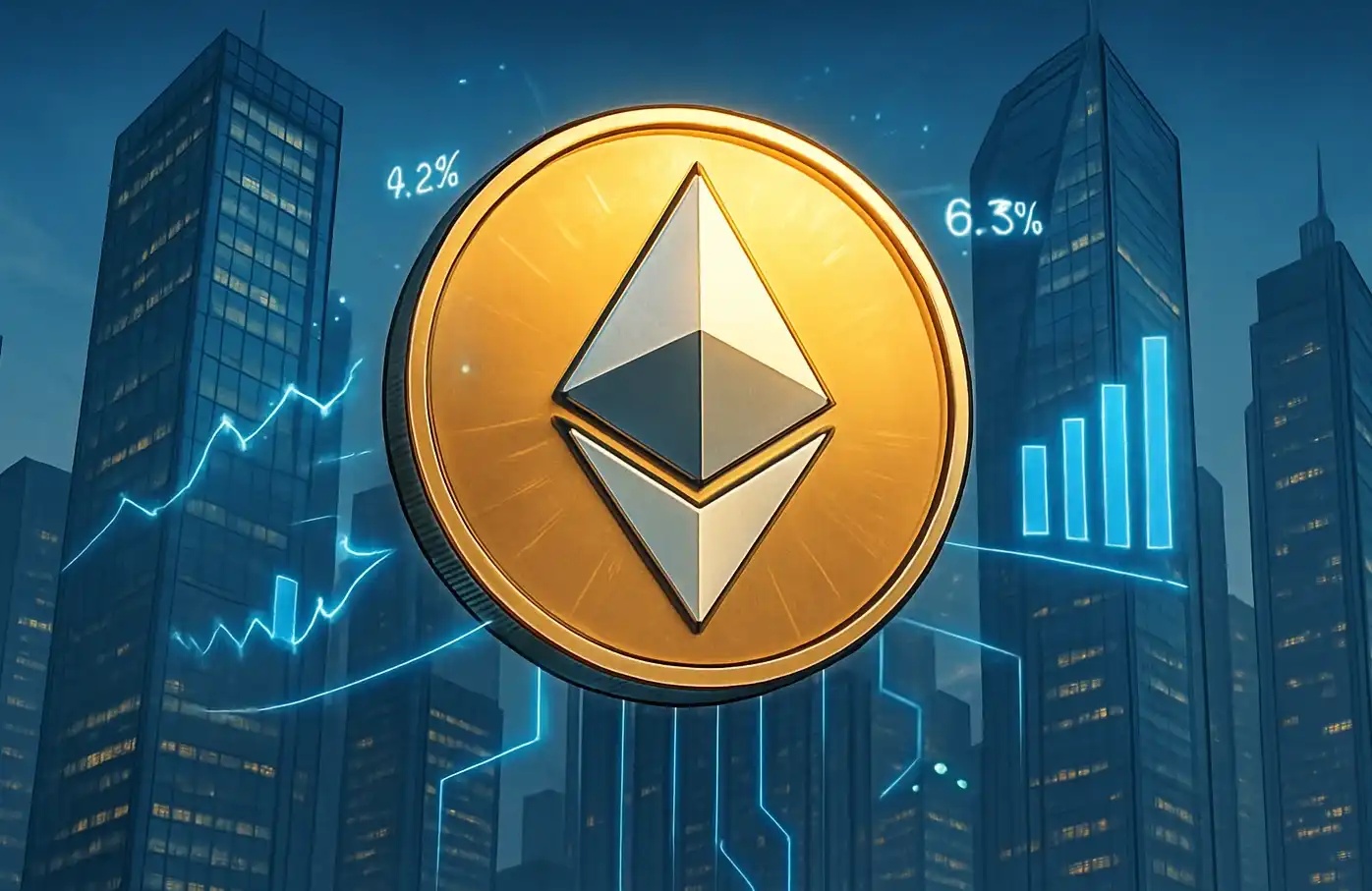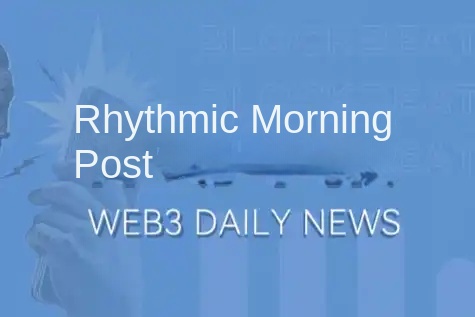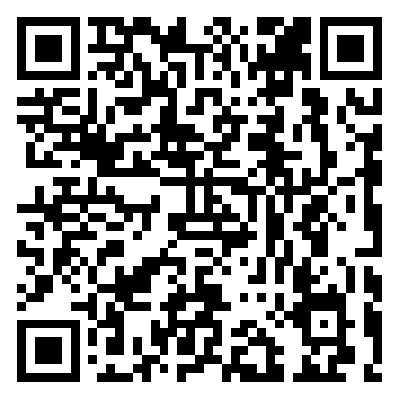How to Navigate the Crowded Prediction Market Space?
Following the announcement on October 7 by Intercontinental Exchange (ICE), the parent company of the New York Stock Exchange, of its plans to invest $2 billion in the prediction market platform Polymarket at a valuation of around $9 billion, just three days later another prediction market giant, Kalshi, also announced the completion of a $300 million funding round, reaching a valuation of $5 billion.
Meanwhile, Polymarket's founder, Shayne Coplan, had previously retweeted or liked posts about the platform possibly launching a token. This time, he listed a series of mainstream cryptocurrency symbols followed by the $POLY ticker on social media, which can be seen as a kind of "hint" at token issuance. This series of messages sparked FOMO among community members. With the news circulating, the prediction market track once again became a hot topic of discussion.
BlockBeats has compiled some practical tips and tools to help everyone better participate in airdrops on major prediction market platforms. The following will introduce the brushing strategies for platforms such as Polymarket, Kalshi, Myriad, and Limitless.
Polymarket
Although there are rumors that Polymarket has already taken an airdrop snapshot, there is still a need to participate.
As one of the largest decentralized prediction markets, Polymarket has left room for "liquidity incentives" in its mechanism design. To encourage users to provide liquidity by placing orders on the order book, Polymarket has introduced a limit order liquidity rewards program. If users place buy or sell orders on the order book at a position close to the market's mid-price (effectively acting as market makers), they can receive daily rewards. The reward funds come from the Polymarket treasury and are calculated based on the depth of the order book and the distance from the mid-price. In simple terms, the closer the order price is to the current market mid-price and the larger the order quantity, the higher the reward.

This mechanism has given rise to a form of extreme order book arbitrage. Some users place large buy orders at the extreme endpoints of the price range. This way, when the market experiences sharp fluctuations or the probability of an event is briefly underestimated, these low-price buy orders automatically execute, allowing users to acquire cheap chips, which they can later sell at a profit when the price returns. Since these orders are usually far from the mid-price, the cost is minimal, yet they can absorb the market's panic selling pressure, achieving a high risk-reward ratio entry. At the same time, these unmatched orders waiting in the process also earn the platform's liquidity rewards. However, it is important to note that this strategy also carries certain risks.
In addition to liquidity incentives, Polymarket also has a long-term holding interest mechanism to stabilize the price of long-duration event markets. The platform provides a 4% annualized holding reward for some long-term markets. Users holding positions in these markets are randomly sampled by the platform every hour to calculate their position size and receive daily interest. Therefore, one of the volume padding strategies is to hold positions in these markets long-term to earn a stable income, and then hedge the price fluctuation risk by hedging in related markets. For example, if holding a large amount of "Yes" position in the "Candidate X Wins" market to earn interest, one can short an equal amount in a related market like "Candidate Y Wins" to hedge the risk, earning only the portion of interest from holding.
Another common technique is to use related markets for risk-free arbitrage. The principle is similar to earning the fee difference in contract trading through hedging. If there are multiple related markets for the same event, players can monitor whether their prices deviate from a reasonable probability relationship. When it is found that the sum of the prices of two markets is not equal to 1 (i.e., the sum of the probabilities on both sides deviates from 100%), one can simultaneously buy the underestimated side and short the overestimated side, locking in risk-free profits.
For example, when the price in the "Event A Wins" market is 0.40 (implying a 40% probability) and the price in the "Event B Wins" market is 0.50 (implying a 50% probability), the sum of their probabilities is only 90% instead of 100%. This means that the market as a whole has underestimated the probability of a certain outcome occurring. At this time, one can buy on the "Event A Wins" side (underestimated) and sell (short) an equal amount on the "Event B Wins" side, with the total cost being less than $1. By holding until settlement, one can profit risk-free.
Thanks to Polymarket's ecosystem support and active community, various specialized arbitrage tools have emerged in the market. For example, the Polyfactual platform operates cross-platform arbitrage robots that continuously monitor quotes for the same event on multiple platforms such as Polymarket and Kalshi. When a price difference opportunity is identified, they execute synchronized buy and sell orders to lock in profits. The platform has also issued tokens, allowing holders to share arbitrage profits based on their holdings. Nevua Markets allows users to set keyword alerts to capture price difference opportunities between different markets in real time.
In addition, the community has developed tools like PolySights and Polyburg for real-time monitoring of market spreads, depth, and trade data. These tools, combined with simple Python scripts, can help identify arbitrage or high-win-rate opportunities. There is also the officially adopted Polymarket Analytics platform, which provides very stable data, supporting detailed metrics such as trading volume, open interest, price trends, account P&L, position changes by market or address.
In conclusion, small-position users are more suitable for earning liquidity rewards through placing limit orders for volume building; whereas large-position users can earn holding interest by maintaining positions in specific markets for the long term and mitigate risks by hedging in correlated markets.
Kalshi
Kalshi's annual trading volume has surged from $300 million last year to an estimated $500 billion this year, even capturing over 60% of the prediction platform market share from Polymarket in recent months. Kalshi has also partnered with mainstream brokers such as Robinhood and Webull to embed event contract trading into the investment apps used by millions of retail investors, significantly increasing the accessibility of prediction markets among ordinary investors, hence being seen as an absolute must-not-miss opportunity.
Kalshi charges approximately 0.7% to 3.5% of the contract amount as a trading fee for each transaction (varies with price), and the platform does not directly profit from user gains or losses. All open limit orders incur no fees, and it is this Maker incentive that ensures the order book has ample liquidity.
Utilizing Kalshi's fee policy, users can significantly reduce trading costs by placing orders, thus generating substantial trading volume with a small capital. For example, by using limit orders to provide liquidity, Kalshi does not charge fees for unfilled limit orders, and post-execution, as a Maker, the user is also exempt from transaction fees. Therefore, users looking to boost trading volume should avoid immediate market orders and instead place orders at favorable prices to await execution.
For instance, if confident about an event occurring, there is no need to immediately take a sell order; rather, one can place a buy order at a slightly lower price and wait. Conversely, even if the placed order is not immediately filled, no fees are incurred, and users can cancel or adjust prices at any time. By continuously placing orders and frequently adjusting quotes based on market changes, one can accumulate trading volume when spreads are narrowed to execute trades and avoid high fees incurred by frequent market orders.
Choosing an "asymmetric information" niche market is also a lesser-known but effective strategy for volume building. Popular markets on Kalshi (such as Fed interest rate decisions, presidential elections) are competitive and efficient in pricing, making it challenging for ordinary users to gain an edge. On the contrary, some niche markets have greater information asymmetry, making them more suitable for meticulous work and minimal investment for high returns.
Experienced traders recommend focusing on niche markets like "quarterly performance of small-cap companies" or "specific regional weather indicators." If you have researched in a relevant field or have access to official statistical data, you may be able to more accurately assess the probability of these events than most people. These markets often have low initial trading volume and high price volatility. Through repeated small-value limit order trades, not only can you accumulate a considerable trading volume but you may also gain excess returns as prices revert.

A user of Platform X, Argona0x, shared his practical experience, starting with just $10. He selectively targeted markets with significant information asymmetry, conducting 20-30 small trades per day. He also took advantage of Kalshi's free events and points activities, earning an additional $40 reward weekly. While results may vary, focusing on a niche market and leveraging one's own information advantage is indeed a cost-effective way to increase trading volume.
To control risk, it is important not to bet most of the funds on a single market; moderate diversification is essential. Especially for markets with poor liquidity, setting stop-loss levels in advance is crucial. For example, exiting when losses reach 5-10% of the total funds to avoid significant losses due to unexpected market movements. Experienced traders share that they usually participate in 3-5 different market categories on Kalshi simultaneously, with each market receiving no more than 20% of the total funds. This effectively reduces the impact of "black swan" events on overall returns.
The openness of the Kalshi ecosystem has also fostered a variety of third-party tools and strategies to help users improve trading volume efficiency and win rate. Some community developers aggregate data from multiple prediction platforms to create cross-platform market dashboards, facilitating simultaneous monitoring of price differences between platforms such as Kalshi and Polymarket.
For instance, ArbBets is an arbitrage scanning tool that can scan across both betting and prediction markets. It can monitor over 100 traditional betting and prediction platforms, including Polymarket and Kalshi, to instantly identify inconsistent quotes for the same event. It alerts users to simultaneously buy contracts on both sides to lock in risk-free profits. In addition, ArbBets also provides positive expected value (+EV) bet filtering to help users identify investment opportunities with win rates greater than the implied odds on Kalshi or Polymarket.

Another example is the Billy Bets AI Agent, which combines real-time data and machine learning models to automatically identify higher win rate betting options and place orders on behalf of users. For example, Billy provides a natural language trading terminal that allows users to input commands like "What are the positive EV bets for tonight's NFL football?" The system will immediately return the matching odds and automatically place orders while providing real-time ROI tracking.
According to official disclosures, since its launch in June 2025, Billy's terminal has processed over $1 million in betting transactions, with a weekly transaction volume growth rate of 23%. This AI agent lowers the barrier for users to analyze decisions themselves and is very user-friendly for those looking to passively obtain high win rate trades.

Myriad
Myriad is a Web3 prediction market protocol incubated by DASTAN, the parent company of Decrypt. Its main feature is embedding prediction markets within news media content. This means that when you read an article on Decrypt or listen to the Rug Radio podcast, you can directly participate in prediction voting on the page related to the topic. As of early October 2025, the Myriad platform has accumulated approximately $18.5 million in USDC trading volume, with over 5 million trades.
On Myriad, users can participate in prediction markets using Points. Points can be obtained for free through various ways, such as connecting social media accounts, reading Decrypt articles, watching Rug Radio videos, daily logins, and completing specific tasks. While Points cannot be directly exchanged for fiat currency, having a high point balance and high win rate can lead to your username appearing on the leaderboard, which may translate into community recognition or special rewards in the future.
Utilizing Points for zero-cost trading volume boosting and leveling up is a preferred strategy for engaging with the Myriad platform. Even if your predictions are incorrect, there is no financial loss. Therefore, beginners should start with Points-based predictions, try out different types of markets and betting strategies, and quickly improve their win rate through hands-on experience. Additionally, earn more Points through daily check-ins, sharing content, and other tasks to increase your "capital."

Experienced players also create low-friction markets to increase trading volume through wash trading. Myriad allows users to custom create new markets, and some veteran players act as "landlords," establishing small-scale, low-dispute markets with short cycles and putting up initial liquidity using Points on both buy and sell sides. For example, they may select a straightforward event related to crypto or sports (such as "Will PNKSTR surpass a $4 billion market cap in October?").
Since these niche markets have few initial participants at launch, creators can add thickness on both the buy and sell sides with a small amount of Points to make the market appear active, attracting other users to participate. Of course, the platform has mechanisms in place to detect and prevent purely self-trading behavior for boosting rankings. Therefore, when operating, it is essential to ensure that transactions have some degree of genuine randomness rather than purely robotic self-buying and selling. Overall, leveraging the market's free creation and matchmaking features with Points, players can significantly increase their account's trading volume.

Since Myriad is still in the early stages of development, active users often receive unexpected rewards. For example, in a recent official points competition, the top 100 users were given priority access to future $MYR token offerings. Users who participated in community testing and provided valuable feedback were included in the first batch of airdrop whitelists. Therefore, besides just increasing transaction volume, actively engaging with the community, staying up to date on the official Discord announcements, often leads to additional hidden benefits.
In summary, Myriad provides users with a low barrier to entry to practice and engage in the prediction market in an innovative setting. By fully utilizing the points system and embedded media features, users can gain experience without financial risk. Once the platform issues tokens in the future or introduces more reward mechanisms, these accumulated experiences have the potential to transform into significant rewards.
Limitless
Limitless is an emerging prediction market platform deployed on the Base blockchain. Since its launch in 2024, it has experienced rapid user growth, with a total trading volume exceeding 4 billion USD and over 37,000 active users. Its product design draws inspiration from centralized exchanges' order book model, supports splitting and merging Yes/No positions to enhance capital efficiency, and allows users to trade in event markets with multiple options.
Limitless has announced the upcoming release of its platform token $LMTS. Despite previous concerns about artificially inflating trading volume by the project team, its experienced investors still maintain strong enthusiasm for the project. The presale during the National Day holiday on kaito was oversubscribed by 200 times. The first season's points activity for airdrop distribution has concluded, and the points program has now entered its second season (starting on September 22, 2025, and lasting until January 26, 2026). During this period, users can continue to earn points through trading, providing liquidity, inviting new users, and other activities.

There are two key requirements to participate in the Limitless points program. First, an account must have a cumulative trading volume of at least $200 to qualify for the points leaderboard. Second, the platform emphasizes transaction quality and states that it will filter out purely random wash trading activities. Only trades that actively engage in real markets and provide "meaningful" liquidity will receive higher ratings.
In other words, if one repeatedly engages in insignificant small orders, they may receive minimal or no points rewards. Conversely, actively participating in popular markets, enhancing order book depth through limit orders, will receive higher weighted scores. Additionally, actively providing liquidity is a crucial way to earn stable points. At the end of each season, users are divided into categories like Silver, Gold, Platinum, Diamond based on their points. Different levels also receive bonus points rewards (up to +20% additional points for Diamond level).
Given that simple small transactions are difficult to quickly accumulate substantial points, volume farming players often consider using hedging methods to lock in large transaction volumes. The method is to self-match in a nearly certain market by using accounts of different sizes to bet against each other.
For example, when an event is about to expire and the outcome is highly uncertain, the Yes contract price has already reached $0.998, while the No contract is only $0.002. At this point, you can use Account A to buy 1000 units of No at a price of $0.002 (costing about $2), and at the same time use Account B to buy 1000 units of Yes at a price of $0.998 (costing about $998). These two transactions in opposite directions essentially mean that you have self-matched 1000 contract units between two accounts, creating a total transaction volume of about $2000. However, regardless of the final outcome, one account's profit almost exactly offsets the other's loss: if the outcome is Yes, Account B receives a $1000 payout, Account A's No position goes to zero, and the two accounts together recover about $1000, with almost the entire principal returned; if the unexpected outcome is No, Account A recovers $1000, Account B loses $998, also resulting in a near wash.
The core is to bet on the side with approximately 99% winning probability and the side with 1% winning probability using different-sized accounts in a market near settlement (about the last minute) where the outcome is almost certain, using an almost certain event to hedge, and complete large volume transactions.

Another strategy is to cast a wide net with orders to earn liquidity mining points. Since Limitless calculates user contributions by simply entering orders into the order book, without the need for actual trades, players can take advantage of this by placing large orders at extreme prices to occupy the order book depth. For example, placing a sell order for 1000 units at 99.9% price (equivalent to willing to sell Yes at $0.999 or buy No at $0.001), because the price is close to 100%, the margin actually used by this order is less than $1. In other words, with only $1 in funds, you provide 1000 units of depth to the market. Once the system samples your order during point calculation, you will receive corresponding point rewards. You can simultaneously place similar depth orders in multiple markets at various prices, exchanging high points for a low cost.
Of course, these orders are unlikely to be actually executed (unless there are extreme market conditions), with almost no risk of loss. However, it is important to pay attention to the platform's monitoring mechanism, as overly deliberate and mechanized large orders may attract attention. It is best to diversify liquidity provision in active markets, making your liquidity provision appear more natural.
While Limitless encourages trading volume, the consideration of transaction quality means that users should pay attention to strategy alignment when engaging in volume boosting activities to avoid receiving a low rating. Wash trading in illiquid markets is likely to be deemed as invalid transactions. It is advisable to choose some popular markets for volume boosting, and hedging operations should be arranged in these markets with real trading volume to avoid being too conspicuous.
On the other hand, participating in some legitimate trades to establish a genuine profit or loss record is also recommended. Some community users share that they combine volume boosting with real betting. After completing the required trading volume, they use a small portion of their funds to bet on one or two events they are confident about, aiming to cover the transaction fees paid during the volume boosting process and make the account's profit and loss curve more natural. Accounts that have both a large volume of trades and maintain a good win rate on public leaderboards are likely to receive official recognition in the future.
Currently, Limitless has explicitly stated that it will distribute $LMTS tokens via airdrop at the end of this season, which will run until the end of January next year. Furthermore, as a member of the Base ecosystem, Limitless benefits from the potential airdrop acknowledgment by Base, which has already been certified, leading to a "double-dip." With the support of top-tier institutions like Coinbase Ventures, the long-term prospects for development are widely seen as promising.
Welcome to join the official BlockBeats community:
Telegram Subscription Group: https://t.me/theblockbeats
Telegram Discussion Group: https://t.me/BlockBeats_App
Official Twitter Account: https://twitter.com/BlockBeatsAsia


 Forum
Forum Finance
Finance
 Specials
Specials
 On-chain Eco
On-chain Eco
 Entry
Entry
 Podcasts
Podcasts
 Activities
Activities
 OPRR
OPRR









